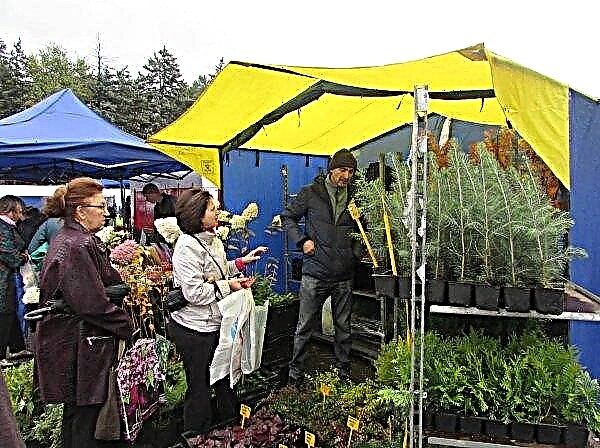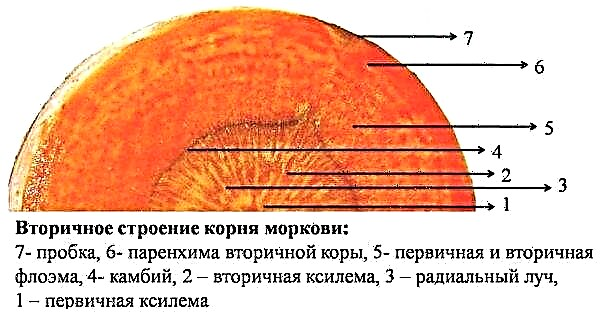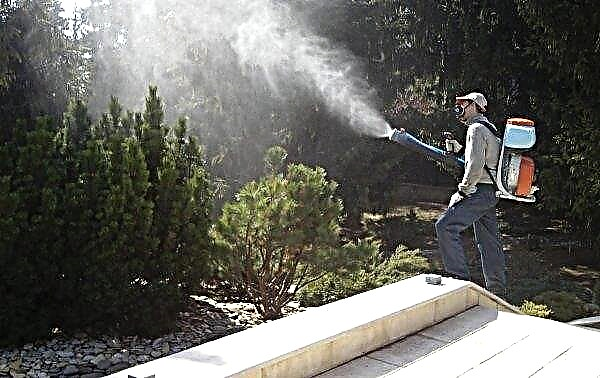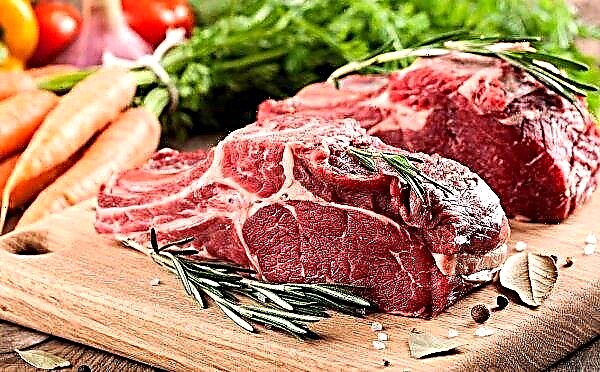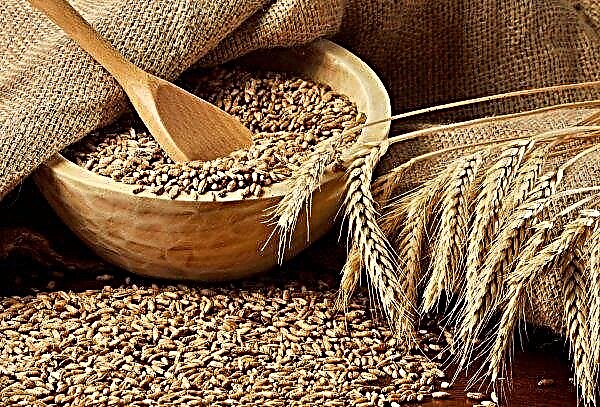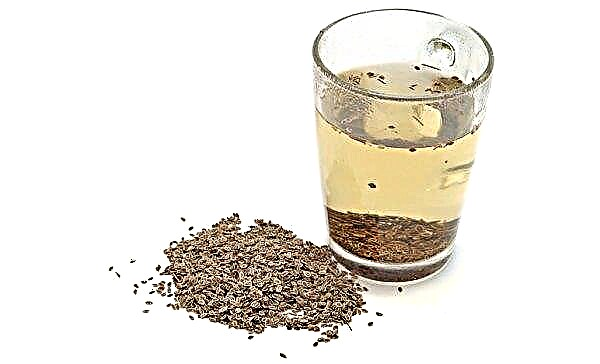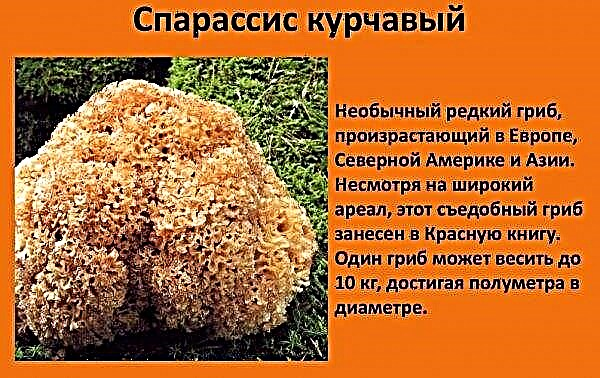Domestic bees, like most living things, are especially dependent on the free access of air. From it, insects receive oxygen for the correct and effective vital activity of cells. In winter, this need is sharply reduced, however, every beekeeper must ensure his apiary with this important substance. The article discusses how to properly ensure ventilation of hives in the winter and what is needed for this.
Gas exchange in beehives
Effective gas exchange between the internal atmosphere of the hives and the external environment is one of the most important processes in the life of bees. It helps to remove water vapor and harmful carbon dioxide from the bee house, and instead saturate the surrounding air with useful oxygen. This is especially important in temperate and northern climatic zones, where low temperatures and prolonged freezing can level this process. Spring and summer air flow in the hives is active. Fresh air enters through the lower notch, water vapor and carbon dioxide, in turn, exit through the upper, located at the highest point of the structure. This makes it possible to create an efficient circulation of gases and the optimal existence of bees.
But in the case of a decrease in ambient temperature to -15 ° C and below, active circulation of air masses through wide open notches is impossible. At temperatures below + 6 ° C, insects often die, so the beekeeper during this period protects the beekeepers from excessive drafts. However, the family, together with carbon dioxide, emits a huge amount of warm water vapor, which, in contact with low temperatures, turns into hoarfrost. After a few days, the frost can completely close the protected ventilation opening, which, undoubtedly, negatively affects the gas exchange in the bee house.
Water vapor will gradually saturate the hive and precipitate in the form of dew, this leads to the accumulation of liquid at the bottom of the chamber with insects. It can freeze or be in the liquid phase constantly. Over time, increased humidity provokes the appearance of fungi in the hive, which in combination with a high coefficient of carbon dioxide causes a slow death of the entire colony. Therefore, for the winter, the swarm surely needs a specialized ventilation system that will provide the bee house with air circulation without heat loss.Did you know? Beekeeping is considered one of the oldest branches of agriculture. According to archaeological finds, people began to tame bees even in primitive society, and the industry has become widespread 7–10 thousand years ago.

Types of winter ventilation of beehives
When bee hibernation ends without a huge amount of death, as well as dampness and mold in the hives, we can talk about a successful wintering of insects. This is achieved not only with high-quality warming of the houses, but also with good ventilation, which is equipped depending on the type of hives, the age of the swarm, etc., therefore, preparation for wintering must be as complex and well-planned as possible.
Diffuse ventilation
The diffuse alternation of air gases between the bee house and the environment is the most common type of gas exchange. Such a system operates on a fairly simple principle. It consists in the fact that fresh air saturates the hive from one notch, after which it evenly passes up and is distributed around the entire perimeter of the space. ATAt the time of this, insects use the necessary amount of oxygen and emit carbon dioxide, which, together with other masses, is brought out under the influence of diffusion forces. 
Thus, fresh air moves upward, and exhaust goes down. This system is quite simple and requires a minimum of time and effort to implement. However, condensation forms during the contact of cold and hot air flows. This threatens the housing of insects with icing.
Did you know? The largest bee in the world is considered to be the species Megachile pluto. The working individual of this species reaches an average length of 40 mm, while the wingspan can reach up to 65 mm.
Deck
This type of ventilation has gained great popularity, no less than the previous one. Its essence lies in the fact that a natural adsorbent is installed in a bee house. As moisture accumulates, it will absorb water vapor, the release of carbon dioxide and air access are ensured by means of narrow slots designed for one insect. The adsorbent can be rotten wood, sphagnum moss, etc. Often this does not even require a special hive, it is enough to use an old stump with an equipped lid. This type of gas exchange has many advantages, the main of which is ease of implementation and high efficiency. 
Hive for winter without a bottom
Not many farmers decide to winter without a bottom in bee houses, but, despite its extremeness, this ventilation method is quite effective and popular.. The main thing in this case is to protect insects from drafts in the area. In the bottom of the bee house, instead of the bottom cover, a fine-mesh metal mesh should be installed through which gas exchange will naturally pass. In this case, the hive must be well insulated with vapor-permeable materials.
This method contributes to a uniform temperature regime, which improves the conditions for the wintering of insects. However, such designs often require increased attention and daily observation, and, if necessary, a partial reduction in the ventilated space of the nest (if the bees began to actively lubricate the net with propolis).
Features of ventilation equipment for different types of hives
Wintering in the wild is one of the most natural ways to wait out adverse temperature conditions. Despite the fact that today, beekeepers create winter roads for bees, it is difficult to achieve natural living conditions for insects in them, so this often leads to a deterioration in the family’s immunity, and sometimes even to degeneration of the population.
Single hull
Single-hut houses for bees are a universal dwelling that can create comfortable conditions for their life and productivity. This is undoubtedly achieved by good gas permeability, therefore absolutely any type of ventilation system is suitable for such types of structures. At the same time, it is necessary to remember that in single-hull structures there is a possibility of the emergence of a spring race. To avoid this, already at the beginning of the thaw, they must be transferred to summer ventilation. 
Multihull
In more complex multi-body designs, you can also equip any of the above gas exchange systems. However, it should be remembered that in such houses it is forbidden to open all doors. For successful ventilation, no more than 2 openings must be opened from all kinds of quantities at all levels for air inflow and outflow.
For successful ventilation, no more than 2 openings must be opened from all kinds of quantities at all levels for air inflow and outflow.
Beehive Loungers
As a rule, most of these insect dwellings are larger and have an uncharacteristic oblong shape; therefore, they require a special approach to gas exchange. On the surface of the structure, on the sides, special ventilation slots should be provided. Letters play an additional role, they are left a little expanded and set on top of the lid.
Cooking letki in the hive for winter
Qualified preparation is the main condition for a successful wintering of bees, therefore, they begin to think about it after the insects have given up the last honey. First of all, the summer houses need to be protected from future snow, therefore, over all openings through which the ventilation will pass, a small shelter should be built from slate, tree, roofing material, etc. (by the type of canopy above the porch).
In order to ensure an effective supply air system in the hive for the winter, it is imperative to close all central notches, only one lower and upper must remain open. The bottom is left closed or provide a gap of not more than 1 cm. The upper ones are approached more carefully. In the first phase of winter (before the beginning of February), it is opened by 5 cm in strong families and not more than 3 cm in weak families. In the second wintering phase, after the first thaw, the upper summers in weak families can be opened by 5 cm, strong completely. In this case, the bottom should be in the same position as during entry into the winter.
Important! Letkovye barriers should be made of steel or other metals. Otherwise, rodents can hook up to the bees.
What bee summer should be open
According to the opinion of most experienced beekeepers, for normal air ventilation, regardless of the ventilation system, at least one cavity should be present for the influx of fresh air. Best of all, the lower notch copes with this task, the opening of which can provide a natural exit of hot steam even through the cracks of the bee house. However, it must be at a height of not less than 30-50 cm of the soil surface, otherwise it may be covered up during heavy snowfall.
Hive ventilation system in spring and summer
After the average daily air temperature has risen to +10 ... + 15 ° С, the hives can be successfully transferred to autumn-summer ventilation. It provides for full ventilation, but without exposure to drafts.
Video: ventilation in the hive in summer
To do this, do the following:
- completely open all the doors and remove the insulation;
- expand all ventilation openings and clear all cracks from propolis;
- Provide ventilation openings and notches so that the openings are not opposite each other;
- close the bee houses from direct sunlight;
- at the beginning of summer, remove the bottom of the house, and instead put a metal mesh. If this is not possible, small holes must be made in the bottom.
What kind of doors should be closed in autumn
In the fall, after the bees were sent for wintering, the hole sizes of all letlets should be minimized. At the same time, the space for departure should be reduced to 3 cm. This is necessary in order to, in addition to gas exchange, to prevent the hornets, wasps and other pests from becoming populated in the hive. Around the first half of November, they should be opened back, while the width of the hole should correspond to the necessary space for ventilation of the house in winter.
Effective ventilation of beehives is the key to successful wintering and successful bee productivity. A properly designed gas exchange system allows high-quality removal of steam and carbon dioxide from the bee house, which are one of the main threats to the existence of insects. Therefore, to prepare the apiary for the cold, you should start not only in advance, but also do it with due attention. Only in this way beekeeping will move from a hobby class to a profitable occupation.

